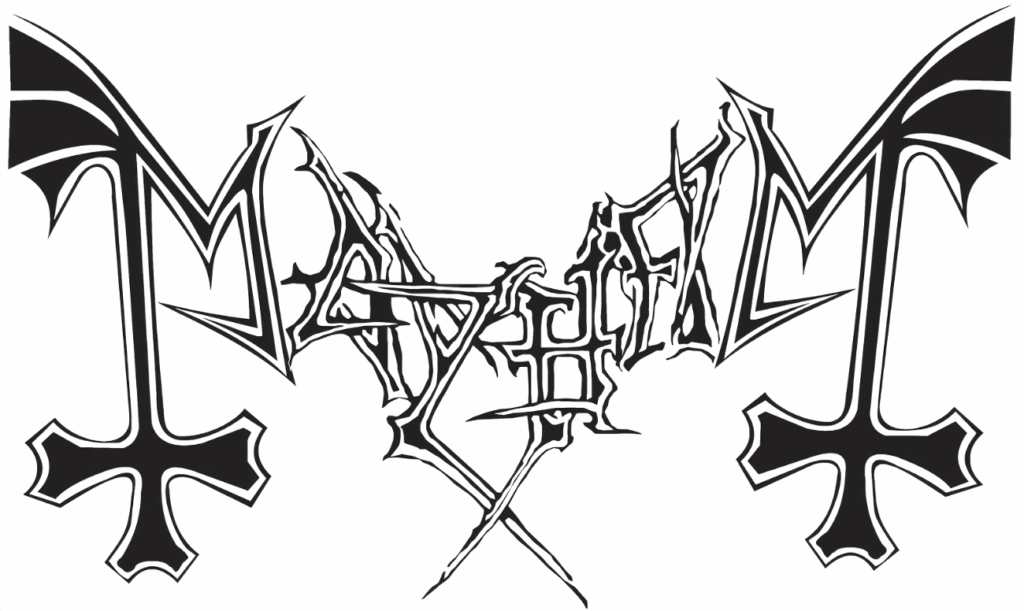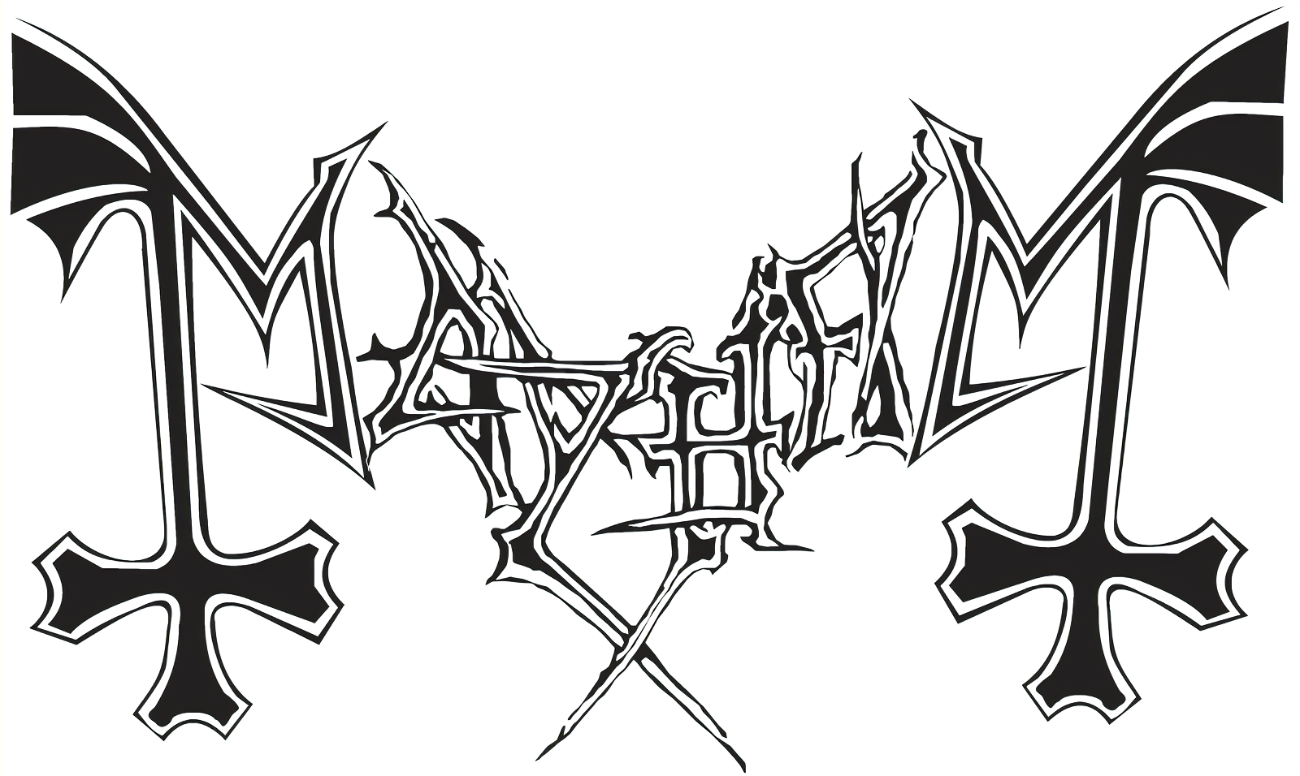
When you think of Norway, you generally think of it as a liberal country. It ranks high in education, has a high standard of living, and tops the tables in the happy country charts. The crime rates are low, and they have universal healthcare.
It seems like, on the surface, the country has no worries. Rewind the clock, however, and the idyllic lifestyle is not so idyllic. A music genre which has been deemed one of the most brutal on and off the stage gained traction in the early 1990s, shook Norway and the music world to its core. A scene called black Metal that wreaked havoc in Norway and ended in dire consequences. This week, The Beat Marches On to 10th August 1993 when Varg Vikernes murders Euronymous.
Like most of the genres before it, the initial death metal scene was created by a handful of people. A group of teenagers who were bored with the current music being made decided to experiment with other styles. These kids wanted to take it to extreme limits. They wanted to cause a stir to the norm, much like punk in the 1970s; they caused outrage.
The premise was simple for black metal: choose a dark stage name for yourself, play your instrument really fast, growl into the microphone, create a logo that your fans can’t make out what you’re called, the more confusing the better, dress up in a gothic style and worship Satan. The last one, you only had to do in public rather than privately, but if the fans found out, you could be in trouble.
The first bands to come out of this scene were Old Funeral, Stigma Diabolicum, Cadavah, and Mayhem. They were inspired by the bands Venom, who had an album called Black Metal, Slayer, and Hellhammer, as well as the horror punk stylings of the Misfits and the prog rock of Pink Floyd.
Mayhem were the band that paved the way in the scene, being the first to release an EP that gained any recognition. They were one of the darkest bands of the scene, which took satanism to an extreme.
The band was formed in 1984 by Oystein Aerseth, aka Destructor, then changed his name to Euronymous, Jorn Stubbard, aka Necrobutcher, and drummer Kjetil Manheim. With session members Eirick Norheim, aka Messiah, and Sven Erik Kristiansen, aka Maniac, who only appeared on the demo. It wasn’t until singer Pelle Yngve Ohlin, aka Dead, and drummer Jan Axel Blomberg, aka Hellhammer, joined in 1988 is when the band gained momentum.
While on stage, Dead aimed to look as close to a corpse as he could. He put on makeup to make himself look paler and less alive than he could. He even used to bury his stage clothes in the mud to look like he had come from the grave.
Dead was only in the band for three years when, on 8th April 1991, he committed suicide with a shotgun to the head. The singer had been struggling from a young age with depression, and by this point, it got too much. He left a simple note apologising for the amount of blood and was gone. This was the start of a strange course of events that would put the band and some of its members in infamy.
Euronymous, who was sharing an apartment with Dead, discovered his roommate’s body. There were rumours of friction between the two and even that the guitarist told him to commit suicide; however, there is no evidence to back up that claim. As both have passed on, there is no way of knowing.
The reaction from Euronymous did raise some cause for concern. Instead of calling the authorities, he went to a local shop, purchased a camera and took a picture of his recently passed singer. The picture did end up on the cover art of a bootlegged live album (Dawn of the Black Hearts, if you want to Google it). He also picked up fragments of Dead’s skull to make into a necklace. Then he called for an ambulance.
When Euronymous called Necrobutcher about the news of their recently deceased friend, he said years later in an interview that there was a joyful glee in his voice, which angered the bass player.
The band were to carry on after their singer’s death. Euronymous opened a record shop in Oslo called Helvete, or Hell in English, where many in the community could meet and hang out. Much like Malcolm McLaren’s Sex Shop in London. He started a record label called Deathlike Silent Productions around this time, which he wouldn’t know yet but would play a part in his demise.
One of the hangers-on at the record shop was Varg Vikernes, aka Count Grishnakh. He would go on to play in Mayhem, but not for a while; he was in Burzum, which was a solo project. Vikernes was very protective of the scene and called out many ‘posers’ in the scene for not being committed enough.
Euronymous called the hangers-on the Black Metal Inner Circle or the Black Circle for short. Those who were worthy got part of Dead’s skull fragments like a biker gang prospect going to a fully fledged member. Then, in 1992, the Black Circle, looking to make a scene, started to cause havoc to the mostly Christian population of Norway by burning down churches.
The authorities believed it was Vikernes who was the ringleader of the church arson. Evidence showed he was there for most of them, what didn’t help was that his 1992 EP was called Aske or translated into English, Ashes. The album art also has a picture of a burning church. It felt more than a coincidence. In May 1994, he was convicted of burning three churches, one of which dated back to 1322.
About a year after the church burnings started (they were carrying on until long after Vikernes was imprisoned), tensions were forming between Euronymous and Varg. Burzum was signed to Deathlike Silent Productions, and Vikernes was filling in on bass for the new Mayhem album that was just about to be released and was questioning why the royalties hadn’t been paid out.
Euronymous called over Vikernes to sign a contract, which was weird as legal stuff was dealt with in the store. Varg had heard a rumour that Euronymous was going to kidnap him and take him to the woods to torture him until he died. He was going to video the process to release it as a snuff film. As it would for most, this put Varg more on edge.
While at the apartment, a scuffle between the two broke out. Varg insists he was only acting in self-defence, and it was Euronymous who grabbed the knife. Whatever happened, the knife ended up in Vikernes’ hands. By now, the pair had ended up in the hallway outside the apartment. Varg had stabbed Euronymous over twenty times, and he lay dead in the hallway.
Vikernes made a run for it once he realised what he had done. He jumped in the car, waiting for him downstairs and decided to lay low in his apartment. Close the curtains, disconnect the phone, etc. It wasn’t long before the authorities were called as Euronymous was left in the hallway.
The police arrested Varg nine days later. They found explosives in his apartment, which he claimed that the pair was going to blow up the Nidaros Cathedral to coincide with the release of the album they were working on. The police didn’t buy the self-defence explanation and charged Vikernes with Murder. In May 1994, Vikernes was sentenced to 21 years in prison, the maximum sentence in Norway at the time.
Later that month, the Mayhem album that they were working on was released. Despite requests from Euronymous’ family to take off Vikernes’ parts, drummer Hellhammer decided to leave them on, saying, ‘I felt it appropriate that the murderer and the victim were on the same record’
Mayhem is still going strong today, with Necrobutcher the only original member in the band. Up to this day, they have released 11 studio albums. Vikernes was released from prison in 2009 and is now living in the south of France, and had a YouTube channel until 2019 spouting neo-Nazi ideologies. Last year, he went back to his black metal roots, reigniting the Burzum project.
The Beat Marches On is a music blog written by Jimmy Whitehead. Jimmy has been blogging for nine years, specialising in Sports (especially American Football). If you want to follow Jimmy on Twitter: @Jimmy_W1987
The Beat Marches On has a Facebook page: https://www.facebook.com/The-Beat-Goes-On-Blog-107727714415791 and an X page: @TheBeatGoesOnB1
There weren’t any websites used for research this time, but there are hundreds of videos on the subject on YouTube.
Plus, the podcasts Uncharted Crime and Mayhem in the Music Industry, Disgraceland, and Coffee and Crime were used for research.
If you want to request a story for The Beat Marches On blog, you can contact jwhiteheadjournalism@gmail.com. We cannot guarantee that the story will be published, but it will be considered.
